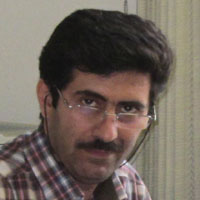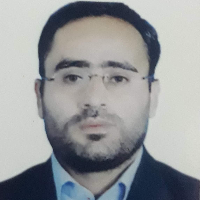The Exploratory Analysis of Spatial Data of Marriage in Rural Areas of Iran
Marriage is considered as one of the demographic events that make a direct impact on structure، composition، dynamics، and evolution of population in each country. Pattern and changes in marital status is subject of some disciplines. In Iran، the structure and composition of marriage in space and time is not constant. In the studies of marriage، two indicators are important: persistent and age of marriage especially early marriage. These indicators were increased from 1986 and then declined to 1996. Study about this indicator is important for exploring specifications of population in Iran. Marital status in Iran has spatial variations. Exploring the patterns and spatial behavior of population is mostly important to dynamism of the population and family planning in rural areas of Iran. In this research، we used an exploration of the spatial data analysis. Several theories have been proposed for marital status and the most important is modernization theory. Modernization theory is a description and explanation of the processes of transformation from traditional or underdeveloped societies into modern ones. This process affects marriage patterns. Theories of modernization or development have existed for centuries، according to the evidence from social scientists to explain the causes and effects of social change. These theories، often substituted geographically varying data for historically varying data، attempted to be causally related to various aspects of life، from religion and family to education، labor، and family. Some have suggested that the modernization of families، i. e.، older ages at marriage، greater use of contraceptives، smaller numbers of children، causes societies become more modern، e. g.، wealthier، more educated. Another theory is based on economic principles. Marriage has many different causes، including a number of children، income inequality، and natural selection of genetic traits over time، allocating time and other resources for families.
Exploratory Spatial Data Analysis (ESDA) extends exploratory data analysis to spatial data. The aims of ESDA are descriptive، rather than confirmatory and seek to detect patterns in spatial data to formulate hypotheses are based on or about the geography of the data and to assess the statistical models for spatial data. The techniques that are employed in ESDA are both visual and resistant. Resistant techniques are those where the results are not greatly affected by a small number of unusual or aberrant values. Visual techniques are those employing charts، graphs، figures and in the case of ESDA، crucially، maps. ESDA includes EDA in the sense that spatial data، which comprise attribute values with associated location identifiers، at one level can be explored without reference to where data values occur on a map. As a final quality of ESDA techniques، they usually stay close to the original data in the sense of either working with the original data or only employing simple intuitive transformations of the data. The data model for ESDA draws on the data model for EDA: DATA = SMOOTH +ROUGH The terms ``smooth'' and ``rough'' can refer to just the set of attribute values of the dataset. Geographic weight matric: Each nonnegative matrix GW= (: i،j=1،.. ،n)، is a possible spatial weight matrix summarizing spatial relations between n spatial units. Here each spatial weight، typically reflects the “spatial influence” of unit j on unit i. Following the standard convention، we here exclude “self-influence” by assuming that =0 for all i=1،…،n (so that W has a zero diagonal). We used KNN method to calculate GW: Compute spatial moving average: It is useful to distinguish between the two classes of ESDA statistics، i. e.، global or whole map statistics، which process all the cases for one (or more) attributes. Focused or local statistics which process subsets of the data one at a time and which may involve a sweep through the data look for evidence of smooth and rough elements of the mapped data. This study considers local statistics. The spatial moving average is local statistic that uses GW-matrix. Data: data on marriage is recorded in Population and Housing Census. We use marriage data 2006. Procedure of research: 1- Making base map: in order to model the spatial trends; we used a regular hexagonal grid as basic units. And each cell was given a unique value as identifying code. 2- Aggregate data: rural data aggregate based on hexagonal units. Firstly، it was with spatial join tool in ArcGIS hexagon map and rural map overlaid. Then، key field summarizes rural data، output is attribute data. Attribute data are joined to hexagonal map. 3- Calculate GW-Matrix: with KNN calculation method، GW-matrix data. 4- Calculate Spatial Moving Average: SMA is calculated in MATLAB application. 5- Cartography 6- Data analysis
The results of this research show a typical spatial trend in marital pattern in rural areas. In central parts of Iran marriage indicator is more than peripheral areas. But hexagonal map illustrates details of this trend. Spatial trend has two patterns; a global trend from southwest to center and east southern to center and local trend in more other places in Iran. While with increase in k in KNN، local pattern is dissolved together and make a global trend. To explore the spatial trend، we used the spatial moving average. Space is hierarchal and the calculation of SMA is conducted with different orders (6، 15، 30، 45، and 60). Survey maps are related to the spatial patterns. This shows that in each level we have a specific local pattern that may be different from other levels. Map 6 shows the spatial trend with k = 6. It can be seen in the map that no spatial trend can be found. There are several local spatial trends. With increase in k-order، the spatial patterns are varying. Increase in the value of k spatial patterns can be changed and local spots are formed. When the order of K is less than 45، the local trends formed and in K greater than 45 a global trend is found on the map. Conclusion Geographical Survey map of Iran with his in rural areas shows that these patterns are not random but follow a certain order or spatial alignment. The maps show spatial patterns of crowds with his wife at the provincial level. The maps also indicate spatial patterns of crowds with his wife at the provincial level that central and northern parts of the country have the highest proportion of married in ten years and more، but in the southern part of the country، the ratio is low.
- حق عضویت دریافتی صرف حمایت از نشریات عضو و نگهداری، تکمیل و توسعه مگیران میشود.
- پرداخت حق اشتراک و دانلود مقالات اجازه بازنشر آن در سایر رسانههای چاپی و دیجیتال را به کاربر نمیدهد.





